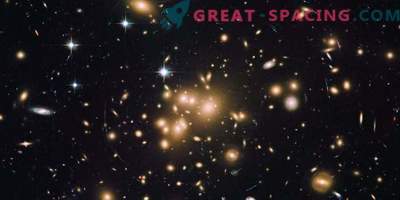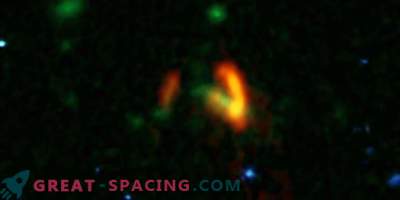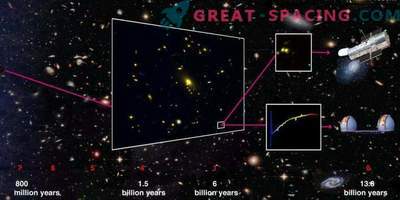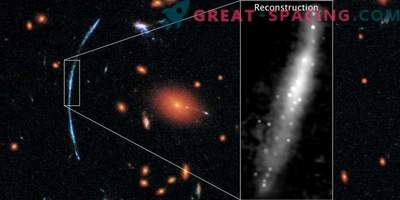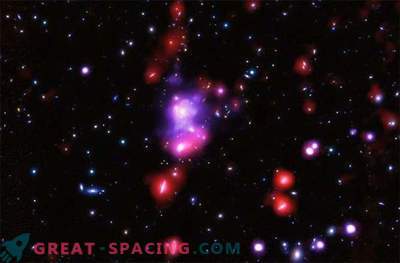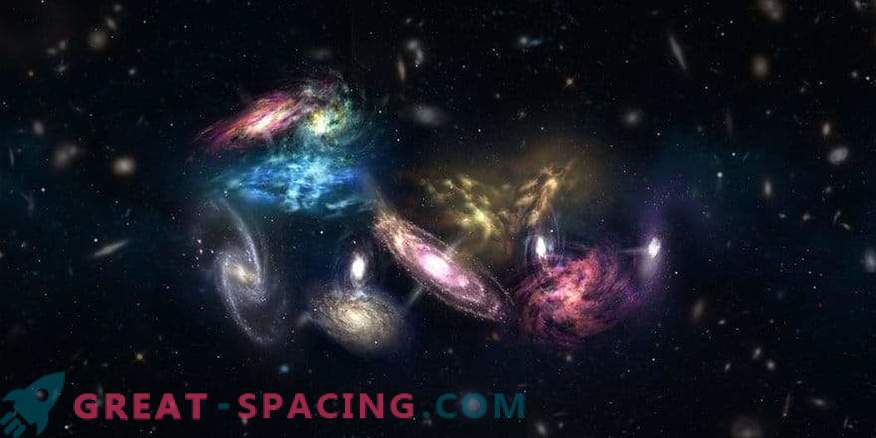
Artistic vision of 14 galaxies found by ALMA in the early and distant Universe. They are in the process of merging and should eventually form the core of a massive galactic cluster
Real wonders happen in deep space! Scientists were able to consider the beginning of the formation of a large-scale cosmic cluster, in which 14 young star galaxies collide.
This ancient event should turn into one of the most massive structures in the known Universe - a galactic cluster, gravitationally bound by dark matter and floating in a sea of hot, ionized gas.
With the help of ALMA, the researchers found a surprisingly dense concentration of 14 galaxies ready to merge and form the core of what would become a giant galactic cluster. Before us is a proto-cluster, distant by 12.4 billion light years. That is, its light began to travel to us through 1.4 billion years after the Big Bang. Individual galaxies create stars 1000 times faster than the Milky Way. As a result, the final cluster in its size will be able to compete with today's giants.
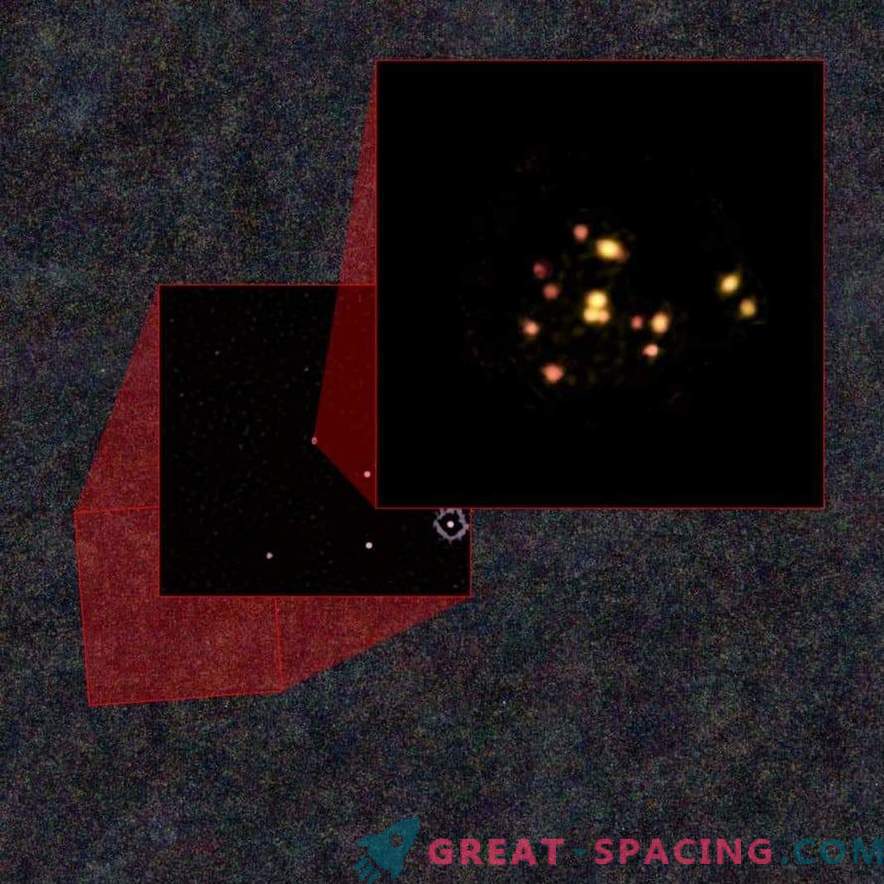
Scaling of galaxies found by ALMA that evolve into a galactic cluster. The external field consists of the Herschel Space Observatory data. Medium shot - part of a wider view of the South Polar telescope To catch such a construction is already a unique opportunity. However, the event occurs so early in space that it is difficult now to understand exactly how the process is carried out. During the first few million years of cosmic history, normal matter and dark steel would unite in large concentrations, which led to the formation of galactic clusters. By mass, they reach millions of billions of solar cells and are capable of containing thousands of galaxies.
Modern theory and computer models suggest that such massive proto-clusters should get much more development time.
The find allows us to study how galactic clusters form under extreme conditions. The specific proto-cluster was named SPT2349-56. For the first time it became noticeable in 2010 in the form of a spot. Further observations in the APEX telescope confirmed the true nature of the object. High resolution ALMA helped identify 14 separate objects.

